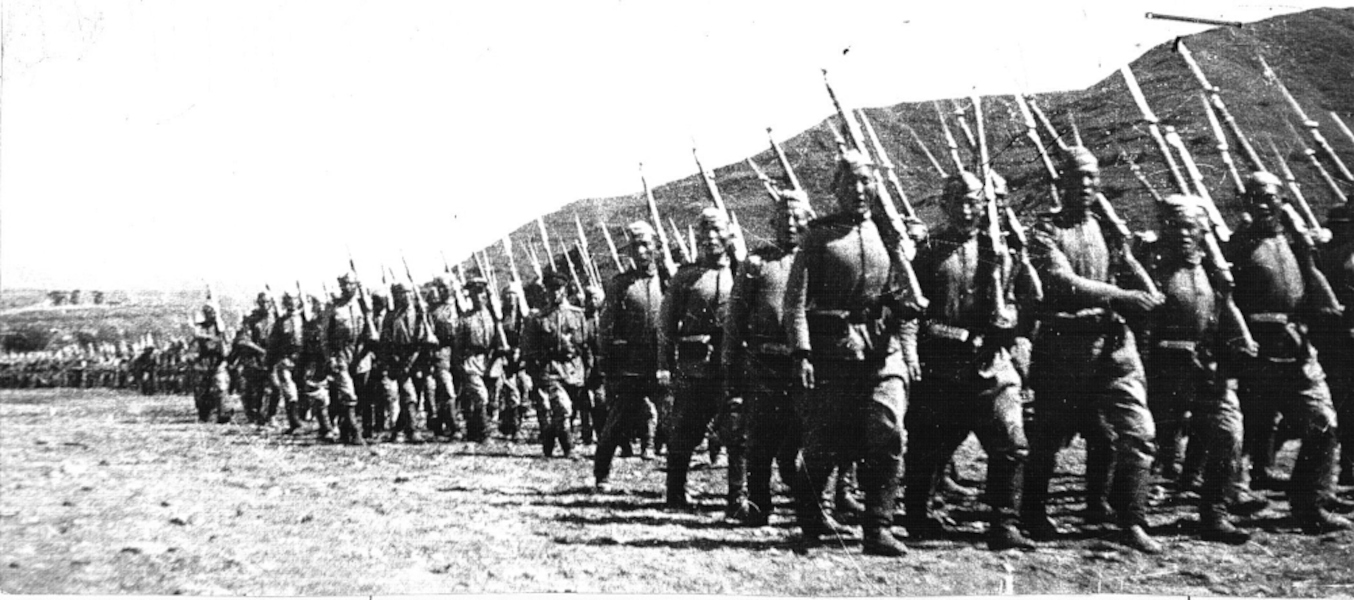The Soviet Union declared war on Japan on August 8, 1945, and at 12:10 midnight on August 9, the First and Second War Eastern Fleet of the Red Army, the South Baikal Front, the Pacific Fleet, and the Amur Fleet invaded northern Manchuria and Korea. The Soviet army numbered 1,685,000 with 5,250 tanks and 5,200 warplanes, against the Kwantung Army’s one million soldiers, 1,200 tanks and 1,900 warplanes.
The next day the MPR also declared war on Japan, as requested by Stalin. Mongolia’s participation in the war against the common enemy was designed to Show China that Mongolia was an independent country. It was also clear that the Mongolia Red Army could defeat the Bargas and the Inner Mongolians, who had sided with the Japanese. Thousands of propaganda leaflets were printed, urging the Barga and Do Wang’s soldiers serving in the Japanese army to surrender. Initially, these were supposed to be distributed by the Mongol soldiers, but due to some unusual circumstances, they were distributed before the offensives began. The small Mongolian army, which fought as a part of the South Baikal Front under the command of Marshal Malinovskii, was called the “Mongolian-Soviet Cavalry Division,” and it crossed the Kinggan Mountains and reached the town of Jehol after traveling 960 km. The group, under the command of Pilev, numbered some 40,000 men, of whom more than 21,000 were from the Mongolian army. It was clear that the Mongolian army. It was clear that the vast Gobi desert could not possibly be crossed by tanks and vehicles in the scorching heat and rain and storm, so horses, cattle, and camels were employed. The herdsmen refused to go along with their livestock, so the Mongolian soldiers became essential to crossing the desert.

Victory and Spoils of War
Except for battling the elements, the army reached the Janchuugiin Ridge without much problem, at times covering 120 kilometers in one day, and reached their destination in just less than ten days. Some five hundred Japanese soldiers, who had not received the order of their Emperor to surrender, encountered the Mongolian-Soviet soldiers on this ridge, which itself was a natural reinforcement. Just one battle took place on the mountain and the Mongol-Soviet troops advanced east to reach Kalgan. The Chinese did not allow the Soviet to liberate Beijing. The troops returned after a small military victory parade in Jehol. During this war and forced march, the Mongolian army lost seventy-eight men, ten of whom were killed in Janchuugiin Battle. The Japanese, who were intimidated by the strong combined attacks of the Americans, Britons, and Chinese, as well as by the atomic bomb, officially surrendered on August 14. However, the war continued in north Asia because Japan did not offer a cease-fire to Moscow until August 23. The Soviet was in a hurry to capture the lands they had been promised under the Yalta Treaty. They were also preparing for their next confrontation by arming the communists under Mao Tse-tung, who were seeking to wage a war to seize the reins of the Chinese government. On September 2, 1945, Japan signed the Act of Capitulation on board the American warship Missouri. This marked an end to one of the bloodiest wars in human history, which had continued for six long years. The Soviets had lost 8,200 men in the Manchurian war, while the Japanese loss amounted to 83,700 dead and another 594,000 soldiers taken prisoner.
Stalin dispatched twenty thousand Japanese prisoners to Mongolia to use them in what the Soviets called the “reconstruction projects”, and by the end of 1945, Mongolia received another 12,318 Japanese prisoners of war.
